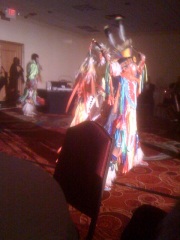Energy Action Coalition Launches Power Vote 2010
The Energy Action Coalition is back in… action. Check out this video launching the Power Vote 2010 campaign aimed at getting dirty energy out of politics, so that energy efficiency and clean energy solutions can power green jobs and economic recovery:
College and university students are leading the youth climate movement to create a safer future for all of us. They have opened applications for political campaign training courses this fall; they are working internationally through theGreat Power Race; they are creating visions of the future they want throughDefine Our Decade; and they are getting to work on 10/10/10 to show politicians how we can reduce atmospheric concentrations of CO2 to 350 parts per million.
As the July issue of the ACUPCC Implementer focused on – addressing the climate crisis requires great leadership at all levels. The youth of our country are certainly among the most important and effective actors in ensuring we make this great transition successfully, peacefully, and quickly.
- Read more about Energy Action Coalition Launches Power Vote 2010
- Add new comment

 Second Nature’s
Second Nature’s 
 Earlier this month, I traveled to Nashville, TN, where I attended the
Earlier this month, I traveled to Nashville, TN, where I attended the